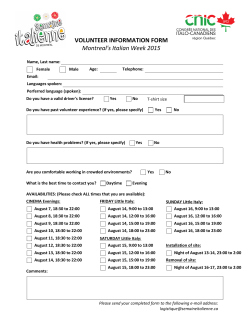
Renaissance Geography
Modern Europe: Renaissance: Location - Where did the Renaissance begin? The map of Europe displays European boundaries as they exist today. This map was provided to give you a frame of reference. The section of the map that displays Italy is divided into the boundaries of the actual city-states as they existed during the Renaissance. The Renaissance began in Italy during the 13th century. As you can see from the brightly colored map to the left, Italy was not a unified country. Instead, it was made up of several independent city-states. Italy was in a prime geographic location on the overland and sea trade routes. The city-states had easy water and land access, were centrally located in Europe, and benefited from a network of roads that remained from the Roman Empire. Italy is located north of Africa and west of the nations of today’s Middle East. In viewing the map of Italy, you can tell that it is uniquely located from a geographic perspective. Italy is a peninsula of both temperate and warmer climates, well suited throughout history for the development of seaports and inland cities that can be accessed through a series of rivers which criss-cross the terrain. Place - What physical and human features characterize the Renaissance? Physical Features The peninsula of Italy is bordered on the West by the Tyrrhenian Sea, on the East by the Adriatic Sea, and to the South by the Mediterranean Sea. Three major rivers cross Italy. The Po, Arno, and Tiber Rivers provided inland access to merchants during the Renaissance as they transported their wares to cities such as Rome and Florence. Italy is also a country of mountains. The Alps cross the Italian citystates to the North and the Apennines travel the northwestern coastline. The northern third of Italy shares a climate similar to the European nations of Austria and Switzerland, while the Southern regions of Italy are warmer like the south of France and Greece. Human Features Despite the fact that the Roman Empire fell in the early 400’s AD, its urban network of roads influenced the spread of the Italian Renaissance. Gradually, the Renaissance moved northward as expanded trade spread cultural practices, religious beliefs, education, and humanist thought to other parts of Europe. Human-Environment Interactions - How were people’s lives shaped by the geography of Italy, and in turn, how have people shaped the country? As a land surrounded by water on three sides, the Italian people, out of necessity through the centuries, earned their living from the sea and through trade. Merchants who traveled to China, India, and Japan returned to share the riches of Indian and Asian cultures. The religious and educational beliefs of the Muslim world were transmitted through trade over many centuries. The wealth of various African cultures mingled as trading partnerships were cultivated with many African kingdoms. Large cities were built on the seacoasts or along riverbanks as Italy developed. Canals were dug to serve as roadways as Venice developed, and during the Renaissance, the population of many Italian cities grew to over 100,000 citizens. The more temperate climate of southern Italy provided the perfect setting for the growth of products such as grapes and olives, which continue to be valuable agricultural products today in Italy. Movement - How were people, products, and ideas moved throughout the Renaissance and why did such movement occur? As mentioned previously, the Italian Renaissance grew as a result of the wealth from trade and a blending of cultural practices from around the world. The waterways and roadways of the Roman Empire provided the avenues for transmission. The innovations and inventions in math, geography, and science, and the music, literature, and artwork of the Italian Renaissance gradually moved northward across Italy and the rest of Europe from the 1300’s to 1500’s AD. A renewed way of thinking and valuing of the rights of the individual encouraged an interest in exploration. As the riches of other cultures traveled across Europe and new advances were made in the field of mapmaking, Europe’s monarchs became interested in exploring uncharted lands in search of new discoveries. Not only were these rulers interested in the possible wealth they could accumulate, they also had dreams of spreading their religious beliefs to other cultures around the world. Region - How was the Italian region similar geographically to other locations and what features set the country apart? In many ways Italy is the geographic bridge between the climates of northern and southern Europe. The cooler, northern regions, as mentioned earlier, are very similar in appearance to the nations of modern day Switzerland and Austria. The Naples region of Italy resembles the warmer climate of Greece and southern France. Geographically, what makes Italy unique is what made it the perfect setting for the birthplace of the Renaissance. Its miles of coastline and centrally accessible location between Africa, the Middle East, positioned it well for trade. Its long history as the heart of the Roman Empire and its network of overland transportation, provided a manmade avenue to central and northern Europe. Today, as you reflect back upon this rich time period, think about key factors in the development of the Renaissance. Perhaps now, the statement "Location is everything!" will have more meaning for you.
© Copyright 2025









